Abstract
Orientation: Basel III makes provision for banks to assess their internal capital adequacy by means of risk-based approaches, stress tests and a leverage ratio. However, the Basel regulations do not prescribe to banks or to bank supervisors which method should be used or how it should be used.
Research purpose: The research problem was whether a framework could be formulated for the implementation of an internal capital adequacy assessment process in accordance with the Basel III accord.
Motivation for the study: East and west African banks and bank supervisors (BS) aspire to become fully compliant with Basel regulations and requested research regarding an internal capital adequacy assessment process (ICAAP) framework for the implementation of Basel III.
Research approach/design and method: A participatory action research (PAR) approach was used because PAR contributes to both knowledge creation and improving professional practice. The PAR comprised a survey and interest groups attended by bank supervisors and senior officers of banks.
Main findings: As a result, an actionable framework for the performance of internal capital adequacy assessment is proposed.
Practical/managerial implications: Capital adequacy, applied appropriately, safeguards a bank’s own economic sustainability and the stability of the financial sector in general.
Contribution/value-add: The proposed capital adequacy framework assists bank supervisors and risk managers to apply a more consistent approach for the implementation of the capital adequacy requirements of Basel III.
Introduction
Banks in Africa need to be concerned about their capital adequacy if they wish to perform their intermediation role with reduced risk of future crises (Blundell-Wignall & Atkinson 2010:24).
According to the Basel Committee on Banking Supervision (BCBS) of the Bank for International Settlements (BIS) (2010), the financial crisis of 2007–2009 exposed a number of weaknesses in the financial system, including shortcomings in banking regulation and supervision.
Hence, the BCBS introduced Basel III in 2010 (and revised it in 2011) to improve the resilience of the banking sector by constraining excess leverage and requiring capital in addition to the economic capital of banks, known as Tiers 1 and 2 capital. Such additional capital would act as protection against model risk and measurement errors, as well as the ability to cope with pro-cyclicality and the interconnectedness of financial institutions (BIS 2010:2).
The BCBS (2010:13) regards Tier 1 regulatory capital as ordinary share capital issued by a bank that meets the criteria for classification as ordinary shares for regulatory purposes. Tier 1 also includes share premiums as a result of issuing shares; retained earnings; accumulated other comprehensive income and undisclosed reserves; ordinary shares issued by consolidated subsidiaries of the bank and held by third parties for capital adequacy purposes; and regulatory adjustments applied in the calculation of Tier 1 capital.
Tier 2 regulatory capital comprises financial instruments issued by a bank that meet the criteria for inclusion in Tier 2 capital (and not included in Tier 1 already). Tier 2 includes the associated share premiums; ordinary shares issued by consolidated subsidiaries of the bank and held by third parties (and not included in Tier 1); certain loss provisions (as specified); and regulatory adjustments applied in the calculation of Tier 2 capital (BIS 2010:17).
In addition to capital adequacy requirements (CARs), the BCBS in their Basel III accord also included internationally harmonised standards for liquidity risk management requiring the use of their liquidity coverage ratio (LCR) and the net stable funding ratio (NSFR). The LCR aims to enable banks to survive an acute stress scenario that could last up to a month. The NSFR has a time horizon of a year and requires banks to implement a sustainable maturity structure for its asset–liability management (ALM), with full compliance required from 01 January 2018 (BCBS 2010:9–10).
The Basel III regulations make provision for banks to use a combination of three different approaches in order to assess their capital adequacy, namely risk-based approaches, stress tests and a leverage ratio. However, the Basel regulations do not prescribe to risk and compliance departments of banks or to bank supervisors (BS) which combination should be used, neither is it prescriptive about how each of these approaches should be used. The Basel regulations also require transparency and BS have to be provided with each bank’s internal capital adequacy assessment on a regular basis. Both banks and BS face the challenge of using appropriate models, thus introducing the risk of opacity and model error, as well as potential mistakes in judgement.
All banks need an internal capital adequacy assessment process (ICAAP), which ensures the bank has adequate economic and regulatory capital to cover the level and nature of the risks to which it is or might be exposed (Bank of England Prudential Regulation Authority 2013:3).
Purely from an economic theory point of view, firms should deploy the least possible equity capital in order to earn the best possible return on equity (ROE) and to increase the firm’s value – and this is equally applicable to banks when determining their optimal economic capital based on their weighted average cost of capital (WACC).
Basel III regulations require banks not only to have adequate capital in order to survive any banking crisis but also to have quality capital. To this end, banks are required to have both adequate economic capital and regulatory capital. Economic capital is defined by Elizalde and Repullo (2007) as follows:
the level of capital chosen by shareholders at the beginning of each period in order to maximize the value of the bank, taking into account the possibility that the bank will be closed if the losses during the period exceed the initial level of capital. (p. 88)
Regulatory capital refers to the tiers of capital that would be eligible for capital adequacy purposes according to Pillar 2 of the Basel III accord (see BIS 2014).
The governance, management and internal processes of banks differ significantly from one another – depending on their size, types of financial services offered, as well as whether they are foreign-owned or locally owned banks (Marx & Mynhardt 2017).
Not all risk and compliance departments of banks have the capability to assess what would constitute adequate economic and regulatory capital, especially on a forward-looking basis.
In view of the urgency of the request from BS and banks to develop a framework for them, a participatory action research (PAR) approach was used. The successful implementation would enhance the economic sustainability of banks, should any financial crises arise. The current research investigated the knowledge gap in this regard (as will be explained in the sections that follow).
The remainder of the article is organised as follows. The ‘Literature review’ section provides context to the study by reviewing previous research in order to address the challenges posed by the ICAAP requirements of the Basel III accord. In the ‘Methodology’ section, the research methodology is explained. In the ‘Data analysis and discussion of results’ section, the results are presented, and in the ‘Recommendations’ section, the framework proposed to the interest groups is presented.
Literature review
According to Rabanal, Narain and Byskov (2003),
economic shocks have become more frequent and severe; bank portfolios in low income countries (LICs) reflect their economies, and tend to be focussed in a narrow range of sectors, increasing the likelihood of correlated default. (p. 6)
Therefore, banks face major risks in Africa.
Spratt (2013) studied the role of financial regulation in developing countries and its influence on economic growth, financial stability, the alleviation of poverty and financial inclusion in LICs. According to Spratt, the importation of Basel II and III from developed economies to LICs is not the solution, and he suggests that financial regulation needs to be designed explicitly for the circumstances of LICs.
Griffith-Jones and Gottschalk (2016:62) equally questioned the effectiveness of complex Basel rules in helping to avoid bank failures and financial crises in Africa, as well as the sheer scale of resources required, such as large databases, risk assessment models and the number of supervisors required.
Miu, Ozdemir and Giesinger (2010:29) questioned whether Basel III could work and proposed that the ICAAP be supplemented by conditional and forward-looking stress testing. These authors found that the Basel III Pillar 2 requirements will have unintended consequences, such as impairing a financial institution’s risk-adjusted profitability, a deceleration of capital build-up during economic expansions, increased cost of capital and borrowing and an increase in the cost of borrowing for end users of credit. The result is a reduction in available credit in the financial system, banks achieving lower ROE rates and even a reduction in investor appetite among suppliers of equity capital to banks. An analysis by Cronje and Van Rooyen (2013:102) found that an increase in the capital requirements of risk-weighted assets (RWAs) from 5% to 14% would decrease the profitability of a South African bank six-fold, from R60 billion to R10 billion.
Nevertheless, Miu et al. (2010:21–36) evaluated the validity of the models for capital buffers of the Basel III Pillar 2 accord under expected and stressed economic conditions. They suggested two improvements: (1) The first deals with the risk sensitivity of the capital requirements and time dimensions in a way that will preserve the forward-looking information content of point-in-time (PIT) risk parameters while simultaneously dampening procyclicality. (2) The second improvement is to decompose risk capital into its conditional PIT and unconditional through-the-cycle elements so that valid comparisons of the capital buffers of financial institutions relative to their risk taking are possible.
Banks operate in volatile economic conditions, requiring continuous compliance with their CARs. In this regard, Cummings and Durrani (2016:26) found evidence of a significantly negative relationship between the internally targeted capital buffers of Australian banks and the state of the business cycle and that banks set higher capital targets compared to regulatory requirements when economic activity is increasing and the demand for loanable funds is on the increase.
Jacobs and Van Vuuren (2014) argue that BS should place a greater reliance on economic capital than on regulatory capital and question whether the current regulatory capital requirements are appropriate for the risks financial institutions face.
According to Nyantakyi and Sy (2015:14), African banks have adequate liquidity, but they experience a low level of integration with global finance, lack a derivatives market as well as experience a lack of human resource capacity and information technology in order to implement the complicated Basel accords. However, foreign-owned banks – Barclays Africa and Stanbic Bank – operating in Africa are subject to the Basel accords because of the compliance of their head office operations in South Africa.
African countries are concerned that if they do not adopt the most complex Basel approaches to capital adequacy, their financial institutions could be penalised by means of higher international borrowing costs (Beck et al. 2011).
African banks who have to access international finance and who need to finance international trade require greater compliance with the Basel accords; otherwise, only foreign-owned banks would be able to play such a role – at the expense of the locally owned banks. Competition between local and foreign-owned banks, as well as among African countries, increases the pressure to comply with the Basel accords.
According to Ernst and Young (2013:4), the size of the African economy has more than tripled since 2000, and the growth rate of a number of African countries will remain among the fastest in the world for the foreseeable future. Yet, Africa continues to face challenges with infrastructure deficits, skills mismatches, weak institutions in addition to a weak financial sector and low levels of regional trade and integration, which remain the main inhibitors of employment and entrepreneurship opportunities (World Economic Forum [WEF] 2017:xiii).
The WEF is concerned that African countries that are dependent on commodities for their economic growth have experienced a decline in the prices of commodities during 2016 and 2017, which resulted in a decrease in the liquidity of banks. This makes banks more fragile, threatens financial stability and increases the cost of borrowing (especially if their governments had increased their borrowing simultaneously in order to fund their budget deficits) (WEF 2017:13). In the final instance, financial market development and the Global Competitiveness Index of such countries are influenced negatively.
According to Brownbridge (2015), most African countries have implemented Basel I, yet they have more capital than required by Basel III. Although such excessive capital levels may assist them in ensuring their economic sustainability, these levels need to be maintained because African banks (according to Brownbridge 2015) face greater risks than their counterparts in advanced economies.
Only 2 out of 54 African countries had succeeded in adopting the Basel II regulations by 2015, namely South Africa and Mauritius (Nyantakyi & Sy 2015:14). Yet, Basel IV regulations were being debated during 2017 among BS, the BCBS and commercial banks in order to aspire to reach a compromise.
In a survey conducted by the BCBS during 2016, African central banks who fall outside the BCBS jurisdictions acknowledged a need for capacity building for micro-prudential supervision and in particular a need for expertise in Basel regulatory capital and liquidity standards, as well as ICAAP (BIS 2016:11).
East and west African banks and BS fall under non-BCBS committee jurisdictions. However, because of competitive forces, they aspire to become compliant with Basel regulations and requested research regarding an ICAAP framework for the implementation of Basel III.
Methodology
The study used PAR. PAR was appropriate for this research because it is a recognised research methodology aimed at both knowledge creation and improving professional practice, involving the participation of interest groups (McNiff & Whitehead 2016:20). Evidence was needed for an ongoing process of change, namely the adoption of the Basel III accord by African countries, while promoting learning among the people closest to the change (McGarvey 2007:1).
McNiff and Whitehead (2016:168) include the use of questionnaires as one of the methods of data collection for action research. The questionnaire used on which this article reports aimed to determine the features of the ICAAP of banks in east and west Africa and to assess the status quo regarding their Basel implementation. The interest groups comprised representatives from banks and central banks in order to propose an ICAAP framework for them.
The interest groups comprised BS, directors (DIR), risk and compliance officers (RCOs), chief financial officers (CFOs), internal auditors (IAs) and non-executive directors (NEDs) of banks from east and west African countries. Uganda, Kenya, Tanzania, Rwanda, South Sudan, Mauritius and Seychelles were the east African countries that participated. The west African countries that participated were Ghana and Nigeria. Five interest groups were held during 2016 with representatives from various countries in attendance. The details are summarised in Table 1.
| TABLE 1: Number of participants from east and west Africa. |
Each of the participants completed the questionnaire at the beginning of each of the sessions during a one-on-one session with the facilitator to ensure interpretations were correct and to extract valid data. Therefore, each of the participants submitted his or her completed questionnaire.
The data collected by means of the questionnaire were summarised using descriptive statistics and discussed in each of the interest groups as a basis for the discussion of an actionable framework for the implementation of an ICAAP. For the purpose of this article, the statistics of the data collected by means of the questionnaires were aggregated. The ‘Data analysis and discussion of results’ section describes the data that were collected.
Ethical considerations
Prof J Marx was exempted because he was responsible for the Literature review and editorial aspects only. Protection of privacy and, safety of participants as well as confidentiality were maintained throughout the study.
Data analysis and discussion of results
At the time of the survey, the participants indicated a varying degree of implementation of Basel accords. Only 31% had implemented either Basel II or Basel III, while the majority (56%) had only partially implemented aspects of the Basel accords (see Figure 1).
 |
FIGURE 1: The implementation of Basel II and Basel III by participants of the interest groups. |
|
The six most important reasons advanced by participants of the interest groups for not implementing Basel II or Basel III are summarised in Figure 2. A lack of guidance was the most important reason for non-implementation. This ties in with the research of Brownbridge (2015) and Nyantakyi and Sy (2015:14).
 |
FIGURE 2: Reasons for the non-implementation of Basel II or Basel III. |
|
Of the participants in the interest groups, 56% indicated they had partially implemented an ICAAP, 22% indicated they had implemented ICAAP and 22% had not done so at all (see Figure 3).
 |
FIGURE 3: The extent of the implementation of the internal capital adequacy assessment process by participants of the interest groups. |
|
The main reason for not implementing ICAAP was ascribed to a lack of external guidance (from the BS), followed by a lack of internal guidance (within the bank) and a sense that ICAAP had no real benefits. Other reasons were that it was too expensive to undertake, a lack of skills and evidence that implementing ICAAP resulted in a competitive advantage. (see Figure 4). This links up with the research of Cronje and Van Rooyen (2013) which points to the decreased profitability of banks because of the substantial increase in expenses as a result of the implementation of the ICAAP requirements of Basel III.
 |
FIGURE 4: Reasons for not implementing an internal capital adequacy assessment process. |
|
Of the participants, 46% were of the opinion that their country lacked bank supervision skills, while 45% said they were not sure. Only 9% felt comfortable that their country had adequate bank supervision skills in their countries of origin (see Figure 5).
 |
FIGURE 5: Bank supervision skills in the country of participants. |
|
The participants were of the opinion that their bank supervision units had insufficient resources, lacked knowledge of ICAAP, did not involve the bank industry and lacked leadership as far as the implementation of ICAAP is concerned (see Figure 6). This is in line with the BCBS survey among African central banks conducted during 2016 (BIS 2016).
 |
FIGURE 6: The main reasons for supervisory challenges. |
|
Of the participants, 66% indicated that they received no guidance regarding the implementation of ICAAP at all, 21% received limited guidance, 4% received comprehensive guidance and 9% had to resort to the use of guidance from outside sources, such as consultants (see Figure 7).
 |
FIGURE 7: The extent of receiving guidance regarding the implementation of the internal capital adequacy assessment process. |
|
The areas where guidance regarding ICAAP was needed were mainly for the documentation that had to be used and training programmes. Other areas included greater clarity about implementation deadlines, country-specific standards, assessment criteria and follow-up actions (see Figure 8).
Of the participants, 82% were not convinced that ICAAP was a useful risk management tool, while only 7% were of the opinion that it was useful for selective portfolios and 11% considered it a useful tool (see Figure 9).
 |
FIGURE 9: The views of the participants about the usefulness of the internal capital adequacy assessment process as a risk management tool. |
|
Those who were of the view that ICAAP should be used as a risk management tool did so because their parent companies required ICAAP and because they believed it contributed some value to their banks. Those participants who were not convinced ICAAP was useful for risk management purposes felt it was too difficult to implement, acknowledged that they did not have enough knowledge of it and said they lacked guidance from their BS (see Figure 10).
 |
FIGURE 10: Reasons for regarding the internal capital adequacy assessment process as a useful risk management tool. |
|
The majority of participants (62%) were not convinced ICAAP would provide a competitive advantage to their bank. A further 29% were unsure whether ICAAP would provide their bank with a competitive advantage, while 9% were uncertain (see Figure 11).
 |
FIGURE 11: The views of participants about the internal capital adequacy assessment process as a competitive advantage. |
|
The participants who were convinced that ICAAP provided a competitive advantage based their observation on the improved sustainability as a result of being well capitalised. Those who did not regard it as a competitive advantage felt the implementation of ICAAP was too costly, that the playing field was not level for all banks and that their markets were not sophisticated enough (see Figure 12).
 |
FIGURE 12: Reasons why participants felt an internal capital adequacy assessment process offered a competitive advantage or not. |
|
Recommendations
Having taken cognisance of the results of the survey, the interest groups deliberated about an actionable framework for the implementation of ICAAP. The proposed framework is provided in Figure 13.
 |
FIGURE 13: The proposed framework for the implementation of an internal capital adequacy assessment process. |
|
The framework consists of three pillars, namely a risk management pillar, a capital and liquidity pillar, and a business management pillar. Each of these aspects is explained in the following sections.
Risk management
ICAAP should be based on risk management and the normal components of risk management (Bank of England Prudential Regulation Authority [PRA] 2013). The ICAAP must assess whether a bank has sufficient capital to absorb unexpected losses caused by transactions (exposures) undertaken. ICAAP itself is arguably the biggest risk a bank faces. Therefore, under this pillar, banks should institute measures and procedures to identify those transactions and exposures that threaten or which might have an effect on the bank’s capital adequacy. The various identification methods will differ from bank to bank depending on the transactions undertaken by the bank.
The particular bank should also formulate its own risk appetite with regard to capital adequacy and have it approved by the board of directors. Risk appetite refers to the amount of risk a bank is willing to take as a result of its activities. The risk appetite with regard to ICAAP should be aligned to the bank’s overall risk appetite. In terms of ICAAP, this means that a bank with a relatively small risk appetite (a conservative management approach) will have a larger capital buffer than a more risk-aggressive bank. The risk appetite in terms of ICAAP is normally expressed as a percentage of the total capital available. For example, if a bank has to adhere to a regulatory CAR of 10% of RWAs, the bank could add another 5% as a buffer. The lower the bank’s risk appetite, the greater the buffer percentage should be.
As a result of the bank’s exposures, the amount of risk to the capital buffer should be measureable and should be expressed in monetary terms. No specific measurement method is proposed but the method used must be to the satisfaction of the banking supervisor. Normally, the regulatory capital requirement is used as basis with the add-on for the internal capital buffer.
A bank should also be concerned not only with the current exposures but also with the future. Forecasting future capital requirements is just as important as the provision for current exposures. Again, no method of forecasting is proposed but such measure should be to the satisfaction of the banking supervisor. An important variable in this type of forecasting is the bank’s risk appetite or its willingness to take on risk in the future.
Capital and liquidity management
In terms of ICAAP, the essence of capital and liquidity management is the ability to have a sufficient capital buffer at all times (Caruana & Narain 2008). ICAAP needs to establish whether the current capital buffer is sufficient for current exposures and also make provision for the future. Again, the regulatory requirements should be used as a basis.
The future movements in the financial markets are often unpredictable and the capital buffer can become obsolete quite suddenly. Therefore, banks have to have contingency plans in place in the form of policies, procedures and responsibilities. The question a bank has to answer is where to get additional capital at short notice to avoid a capital shortfall. There are different sources of capital available and a bank should identify these and be able to access it at short notice.
Business management
Business units or departments in the bank create capital risk through their activities (BIS 2014). Therefore, ICAAP should be connected to the business lines. These business lines should perform their own ICAAP, which must be monitored from a central point in the bank. However, it is important that the business lines follow the same methodology as the rest of the bank. Capital budgeting, forecasting, monitoring and reporting are therefore performed in the business lines with control being exercised at central level.
In the current study, the procedure as set out in Figure 14 for the implementation of ICAAP was formulated. The implementation procedure for ICAAP follows these steps. The implementation procedure is a combination of governance, risk management, reporting and control.
 |
FIGURE 14: Proposed procedure for the implementation of an internal capital adequacy assessment process. |
|
Internal capital adequacy assessment process policy
The implementation procedure starts with the formulation of an ICAAP policy for the bank. This should be a document explaining the essence and management of ICAAP, the way risks will be identified and managed in view of the current and future business activities of the bank, the possible scenarios anticipated, as well as the way capital and liquidity will be managed. The ICAAP policy should also be approved by the board of directors of the bank.
Statement of financial position forecasting
Forecasting the statement of financial position is the next step enabling a bank to do ‘what if’ scenario analyses in order to evaluate the effect of various scenarios on the strength of the statement of financial position and to assess both the risk capacity and risk appetite of the bank. According to Hedberg (2013:27), the goal of forecasting is not to provide exact forecasts of the future, but rather to analyse how different risk drivers affect the bank under different stress scenarios.
Capital planning
Each bank should have a capital planning process. Capital planning requires a bank to be forward-looking about its capital base and to evaluate critically whether the economic and regulatory capital will be adequate to cover future risks. No particular method for capital planning is proposed as this will depend on the particular bank’s activities and the risks faced.
Risk identification
A bank’s risk manager is responsible for the design and implementation of procedures for measuring, monitoring and reporting risks, as well as the escalation of risks to the board of directors of the bank. Risk identification needs to be an integral part of the bank’s strategy and business planning, the definition of the bank’s risk appetite and the bank’s operational activities.
Risk materiality assessment
The risk materiality assessment in terms of capital adequacy requires that risks be prioritised based on their potential threat to the sustainability of the bank and changing its status from a going concern to a gone concern. The bank should have a formal risk materiality assessment procedure in place – not only for the bank itself but it will also be assessed by the banking regulator to ascertain whether it is suitable for the bank’s overall risk profile.
Risk quantification
Risk quantification may use various metrics, such as historical loss data for the measurement of operational risk, and yield curves, credit spreads, default probabilities and value at risk (VAR) for the measurement of market risk. Determining the capital required for counterparty credit risk (CCR) may be done either by using the Basel-standardised approach or by using the internal ratings-based (IRB) approach. The standardised approach requires risk weights provided by external credit rating agencies such as Moody’s, S&P or Fitch. In the absence of such rating agencies, banks have to use the IRB approach and estimate the probability of default (PD) and the Basel values for loss given default (LGD). A more advanced approach would be to estimate PD, exposure at default and LGD.
Stress testing
In terms of ICAAP, stress testing is essential to ascertain whether the bank has sufficient capital to cover the bank in case of stress events. Stress testing is aimed at evaluating the potential effect of a specific event and/or movement in a set of financial variables. Stress testing is done to complement measures, such as VAR, and may be done using either scenario tests or sensitivity tests (BIS 2005:3).
Risk aggregation
It is essential that a bank aggregate all its risks for capital adequacy purposes. Risk aggregation involves the processing and gathering of risk data according to the bank’s activities and reporting requirements in order to measure performance against its risk tolerance or risk appetite (BIS 2013:2).
Economic capital allocation
Once all material risks have been evaluated and aggregated to yield the bank’s overall risk position, the question arises regarding which amounts and which types of risk coverage capital are available. Economic capital is a buffer against possible losses from a transaction, a business line or the overall operations of the bank. Banks calculate economic capital using their own initiative and for exclusively proprietary purposes related to capital allocation and performance measurement. Economic capital is intended to reflect the actual risks a bank firm faces more accurately. Banks should then allocate economic capital accordingly to products, departments or business activities.
Reconciliation of the economic and regulatory capital
The reconciliation of the economic and regulatory capital requires that all provisions for economic and regulatory capital be aggregated in order to arrive at the total amount of internal capital that would be adequate in order to ensure the economic sustainability of the bank. However, such an amount should not be static because the risks emanating from the external environment are dynamic, interconnected with one another and changing continuously. The amount of economic and regulatory capital should be adjusted depending on fluctuations in business conditions, changes in risks and/or changes to business units that occur from time to time.
Monitoring and reporting
In a bank, the units responsible for risk management and capital allocation need to monitor capital adequacy and report regularly to the board of directors regarding any changes that may be required. Areas that should be monitored and reported on are:
- risks for the total bank as a unit and also broken down by risk type
- risk cover and utilisation of overall bank limits
- risk profile and limit utilisation of high-risk areas
- areas or risk types, which have exceeded their limits
- development of risk status compared to the previous period
- results of stress and back tests, including analyses
- profit and loss risk for the bank as a unit and broken down by risk type.
Control mechanisms
In undertaking an ICAAP, a bank should be able to ensure that it has appropriate processes in place to ensure compliance. Control mechanisms need to measure and compare the actual figures for capital allocation to the target figures, and deviations need to be addressed by the management of the bank. In this context, ‘control’ refers to the process of ensuring that a bank’s risk profile remains in line with its risk goals at all times. It means a regular comparison of the bank’s target and actual situation. In the ICAAP, the target situation is defined by the limits assigned by the bank.
Conclusion
The problem of this research was whether a framework for the implementation of ICAAP by banks in east and west African countries could be designed.
The literature indicated that the implementation of Basel III and ICAAP in particular, requires leadership, specialised knowledge and skills from BS and bank staff members alike, as well as appropriate information and communication technology. Various levels of successful implementation of the Basel Accords were being achieved across the African continent. In the current research, foreign-owned banks had an advantage because their parent companies enabled them to implement ICAAP successfully.
Locally owned banks need greater integration with global finance, a derivatives market that could assist in managing market risk, as well as rating agencies who could assist in mitigating CCR. African central banks who fall outside the BCBS jurisdiction acknowledge a need for capacity building in Basel regulatory capital and liquidity standards as well as ICAAP. As a result, competitive forces, east and west African banks experienced an urgent need for the current research and for capacity development.
In addition to the literature review, the current study used PAR by involving the participation of interest groups for both the purpose of knowledge creation and for improving professional practice as part of capacity development. The interest groups consisted of BS, DIR, RCOs, CFOs, IAs and NEDs of banks from east and west African countries.
This study found that participants involved in the interest groups acknowledged varied degrees of implementation of the Basel accords. The reasons for not implementing ICAAP were ascribed to (in order of importance):
- a lack of guidance from the BS
- an internal lack of guidance
- a perception that ICAAP did not yield real benefits
- cost considerations
- no competitive advantage as a result of ICAAP and
- a lack of skills.
The participants indicated a need for documentation and training programmes regarding ICAAP. Of concern was that 82% of the participants did not appreciate the role of ICAAP as a risk management tool. The explanations offered were that ICAAP was too difficult, participants did not have adequate knowledge and supervisory guidance was lacking. In order to address this, interest groups met for PAR purposes to develop a framework for the implementation of ICAAP. The benefit of PAR was that it provided a solution to the problem and contributed to the professional development of the participants.
The literature and the findings of this study complement one another and confirmed the need for leadership, knowledge and skills, as well as a need for documentation and training about ICAAP. Using PAR assisted in alleviating the training need about ICAAP, as well as creating knowledge as a result of the formulation of a sensible framework for the implementation of ICAAP in east and west African countries. The ICAAP framework was validated by the participants.
It can be concluded that ICAAP could be implemented by the east and west African countries using the ICAAP framework, which had been proposed by the interest groups.
The limitation of the current research was that the participants came from east and west African countries only. Further research could be done for other African countries and regions, and the framework for the implementation of ICAAP could be validated and refined further.
The unique contribution of the current research was that a framework for ICAAP implementation had been developed using PAR. In this study, PAR engaged participants closest to the problem – from BS to bank staff members involved with risk management and ICAAP – in such a way that it produced objective data for building knowledge that strengthens the participants and improves the implementation of ICAAP in east and west African countries.
According to Koch et al. (2017), the envisaged Basel IV regulations will be even more demanding than its predecessors. According to these authors, Basel IV regulations were expected to take force by 2025, but the risk and compliance departments of banks are required to implement so-called ‘no-regret measures’ in the meantime in order to strengthen their risk mitigation. As stated by Bailey (2014):
Higher quality capital and larger capital buffers are critical to bank resilience – delivering a more stable system both through lower sensitivity of lending behaviour to shocks and reducing the probability of failure and with it the risk of dramatic shifts in lending behaviour. (p. 6)
Acknowledgements
Competing interests
The authors declare that they have no financial or personal relationships that may have inappropriately influenced them in writing this article.
Authors’ contributions
R.H.M. was responsible for data collection, focus groups, graphs and analysis. J.M. was responsible for abstract, introduction, literature review, summary and finalisation of the article.
References
Bailey A., 2014, The capital adequacy of banks: Today’s issues and what we have learned from the past, Speech by Mr Andrew Bailey, Deputy Governor of Prudential regulation and Chief Executive Officer of the Prudential Regulation Authority at the Bank of England, Bloomberg, London, 10 July, viewed 03 August 2017, from http://www.bis.org/review/r140711e.htm
Bank of England Prudential Regulation Authority (PRA), 2013, The Internal Capital Adequacy Assessment Process (ICAAP) and the Supervisory Review and Evaluation Process (SREP) – SS5/13, viewed 09 August 2017, from http://www.bankofengland.co.uk/pra/Documents/publications/policy/2013/icaapss513.pdf
Bank for International Settlements (BIS), 2005, Stress testing at major financial institutions: Survey results and practice, viewed 31 August 2017, from http://www.bis.org/publ/cgfs24.pdf
Bank for International Settlements (BIS), 2010, Basel III: A global regulatory framework for more resilient banks and banking systems, viewed 08 August 2017, from http://www.bis.org/publ/bcbs189.htm
Bank for International Settlements (BIS), 2013, Principles for effective risk data aggregation and risk reporting, viewed 31 August 2017, from http://www.bis.org/publ/bcbs239.pdf.
Bank for International Settlements (BIS), 2014, A sound capital planning process: Fundamental elements, viewed 14 November 2017, from https://www.bis.org/publ/bcbs277.pdf
Bank for International Settlements (BIS), 2016, Supervisory priorities in non-Basel Committee jurisdictions, Occasional paper no. 13, viewed 07 August 2017, from http://www.bis.org/fsi/fsipapers13.pdf
Beck, T., Maimbo, S., Faye, I. & Triki, T., 2011, Financing Africa: Through the crisis and beyond, World Bank, Washington, DC.
Blundell-Wignall, A. & Atkinson, P., 2010. ‘Thinking beyond Basel III: Necessary solutions for capital and liquidity’, OECD Journal: Financial Market Trends 2(1), 9–33, viewed 11 November 2017, from http://www.oecd-ilibrary.org/finance-and-investment/thinking-beyond-basel-iii_fmt-2010-5km7k9tpcjmn
Brownbridge, M., 2015, ‘How relevant are the Basel capital reforms for sub-Saharan Africa?’, Journal of Risk Management in Financial Institutions 8(2), 153–162, viewed 22 August 2017, from http://www.ingentaconnect.com/content/hsp/jrmfi/2015/00000008/00000002/art00005
Caruana, J. & Narain, A., 2008. ‘Banking on more’, Finance and Development (June), viewed 14 November 2017, from https://www.imf.org/external/pubs/ft/fandd/2008/06/pdf/caruana.pdf
Cronje, F. & Van Rooyen, J.H., 2013, ‘A critical evaluation of the sensitivity of a bank’s balance sheet to change when optimizing for capital requirements under Basel’, Corporate Ownership and Control 11(1), 102–116. https://doi.org/10.22495/cocv11i1art9
Cummings, J.R. & Durrani, K.J., 2016, Regulatory capital and internal capital targets: An examination of the Australian banking industry, CIFR Paper No. 112/2016/Project T023, viewed 03 August 2017, from https://ssrn.com/abstract=2498588
Elizalde, A. & Repullo, R., 2007, ‘Economic and regulatory capital in banking: What is the difference?’, International Journal of Central Banking 3(3), 87–117, viewed 07 September 2016, from http://www.ijcb.org/journal/ijcb07q3a3.pdf
Ernst & Young, 2013, Getting down to business: 2013 business attractiveness survey, viewed 14 August 2017, from http://www.ey.com/Publication/vwLUAssets/The_Africa_Attractiveness_Survey_2013/$FILE/Africa_Attractiveness_Survey_2013_AU1582.pdf
Griffith-Jones, S. & Gottschalk, R., 2016, Achieving financial stability and growth in Africa, Routledge, New York.
Hedberg, J., 2013, Operationalization of risk appetite: Balance sheet projections of banks, Lund University, Lund.
Herr, K. & Anderson, G.L., 2014, The action research dissertation: A guide for students and faculty, Sage, London, UK.
Jacobs, J. & Van Vuuren, G., 2014, ‘A case for economic capital as a pillar 1 regulatory capital’, South African Journal of Economics 82(2), 290–314. doi:10.1111/saje.12041/full
Koch, S., Schneider, S., Schneider, R. & Schröck, G., 2017, Basel IV: What’s next for European banks?, viewed 03 August 2017, from http://www.mckinsey.com/business-functions/risk/our-insights/basel-iv-whats-next-for-european-banks
McGarvey, C., 2007, Participatory action research, viewed 22 August 2017, from http://www.grantcraft.org/assets/content/resources/par.pdf
McNiff, J. & Whitehead, J., 2016, You and your action research project, Routledge, New York, NY.
Miu, P. & Ozdemir, B., 2010. ‘Managing capital buffers in the Pillar II framework: Designing an effective ICAAP/ORSA to manage procyclicality and to reconcile short-term and long-term views of capital’, The Journal of Risk Model Validation 4(4), 3–47, viewed 10 August 2017, from https://www.researchgate.net/publication/256485705_Managing_Capital_Buffers_in_the_Pillar_II_Framework_Designing_an_Effective_ICAAPORSA_to_manage_Procyclicality_and_to_reconcile_Short-Term_and_Long-Term_Views_of_Capital
Miu, P., Ozdemir, B. & Giesinger, M., 2010, Can Basel III work? Examining the new capital stability rules by the Basel Committee: A theoretical and empirical study of capital buffers, viewed 10 August 2017, from https://papers.ssrn.com/sol3/papers.cfm?abstract_id=1556446
Nyantakyi, E.B. & Sy, M., 2015, ‘The banking system in Africa: Main facts and challenges’, Africa Economic Brief, viewed 03 August 2017, from https://www.afdb.org/fileadmin/uploads/afdb/Documents/Knowledge/AEB_Vol_6_Issue_5_2015_The_Banking_System_in_Africa__Main_Facts_and_Challenges-10_2015.pdf
Rabanal, P., Narain, A. & Byskov, S., 2003, Prudential issues in less diversified economies, IMF working papers WP/03/198, International Monetary Fund, Washington, DC.
Spratt, S., 2013, Balancing growth with stability in low-income counties: A conceptual framework on the impact of financial sector structure and financial regulation, Institute of Development Studies, Brighton.
World Economic Forum (WEF), 2017, The Africa competiveness report 2017, viewed 14 August 2017, from http://www3.weforum.org/docs/WEF_ACR_2017.pdf
|